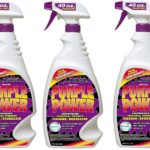Quick Navigation

Besides the build, color is crucial when personalizing your car and home. However, the market is awash with various shades, qualities, and brands of paint.
When selecting paint, the factors to consider include ease of application, durability, variety, and maintenance cost.
While variety is essential in color selection, paint options range from appealing, durable qualities to low-quality, hazardous brands.
This article tackles various types of house paints and car paints, their features, and the benefits of each kind of paint.
Car Paints
Automotive paints are more diverse and costlier than house paints. This is due to the pigments’ composition geared for vehicles’ metallic body and prolonged exposure to sunlight.
Unlike house paints, car paints can attach to non-porous surfaces and take longer to fade.
Automotive paint comprises acrylic resin-based and water-based options. Acrylic-based colors include; acrylic lacquer, acrylic enamel, and acrylic urethane.
Besides the ingredients, car paints can also be categorized according to their finish. For this, paints are gauged by their richness in reflecting light and the deepness of color.
However, some paints comprise additional ingredients, increasing the cost of application and maintenance.
Acrylic Lacquer
Acrylic lacquer is a popular option, which was a staple for car owners between 1920 and 1960. Besides their easy application, acrylic lacquer paints are cheaper than other options, yielding substantial savings.
This type of paint also dries fast, thus enabling multiple coats without dripping or muddying the gloss.
Even better, scratches on acrylic lacquer paints can easily be fixed without ruining the uniformity of color.
However, acrylic lacquer performs poorly as it withstands exposure to chemicals and UV rays. Acrylic lacquer-based paints last less long than their counterparts and require frequent application of new paint.
Finally, you need more acrylic lacquer as multiple coats are needed to complete a project.
Acrylic Enamel
Acrylic enamel is an equally popular automotive paint. This was a successor to lacquer-based acrylic and lasted longer. Unlike the former, acrylic enamel holds up better with exposure to UV rays and chemicals.
However, acrylic enamel is harder to apply, thus may limit the DIY application. Acrylic enamel dries off faster on vehicles, making for a shorter car repainting duration.
Acrylic Urethane
Acrylic urethane offers the best features of enamel and lacquer acrylic. Urethane-based paints allow for easy application and long-lasting service without fading or peeling.
Additionally, Acrylic urethane automotive paints are compatible with paint hardeners, ensuring fast drying.
In addition to this, the paint comprises reducing elements that provide quick, consistent spraying.
Also, these types of paint can be applied to a variety of paints without reacting. However, acrylic urethane is highly toxic. For this reason, you are required to wear proper protective gear to reduce contact with the paint.
Water-based Automotive Paints
Water-based car paints are cheaper and allow for more straightforward applications. They also come in a larger variety of shades than acrylic-based options.
However, water-based paints take longer to dry in areas with high humidity and lower temperatures. Water-based options also call for the application of a car primer to yield a more uniform coat.
Types Of Car Paint Based On The Quality Of The Finish

Solid Finish
This is usually the initial paint by the manufacturer. A solid finish yields a neutral appeal and has a lower capacity to reflect light.
However, metallic finishes offer various shades to select from and are easy to repair in case of chipping and scratching. However, solid finishes wear out faster, thus requiring repainted more often.
Metallic Finish
Metallic paints comprise aluminum powder, which reflects light, yielding a shiny finish. However, metallic colors are costlier than solid options and are tougher to repair without affecting the uniformity.
Pearlescent Finish
Pearlescent paints have a deeper and shinier appeal than metallic finishes. This is because iridescent colors comprise ceramic crystals with rich reflective and refractive properties.
As such, pearlescent paints tend to show various colors and yield a quality visual appeal. Even better, pearlescent pigments are slowly fading, thus last longer, reducing the cost of regular repainting.
Matte
Unlike pearlescent and metallic finishes, matte has lower reflective properties and more profound paint quality. Matte paints often yield a satin/silk finish.
However, matte is way more expensive than its counterparts and requires unique products for cleaning, thus having a higher maintenance cost.
House Paints
Oil-based Paints
Oil-based house paints are also known as alkyd paints. These are more durable than their counterparts and provide an even level when applied on surfaces.
Additionally, oil-based paints leave fewer brush marks on surfaces, thus yielding a better appealing finish. However, oil-based house paints take longer to dry, with durations reaching 24 hours.
Oil-based paints for the house have a strong smell, which may prove daunting for some. Unlike water-based paints, alkyd paints need thinner for the cleaning of paintbrushes.
Water-based Paint
Water-based paints come in various colors and with different ingredients. They come in latex and acrylic varieties; this allows for faster drying and yields a better gloss.
Unlike the former, water-based paints have little odor and can be cleaned easily.
Paint Sheen
Paint sheen is the shinier option for house interior and exterior. Besides its ease of application, the glow is stain-resistant and easy to maintain.
However, paint sheen tends to illuminate dents on your wall, thus calls for regular maintenance.
Can You Paint A Car With House Paint?
Unfortunately, painting a car is not a matter of throwing on whatever paint that sticks.
Given the vehicle’s metallic body and long durations of exposure to UV rays, consider multiple factors when selecting car paint.
While house paint can hold on to your vehicle after the primer’s application, it fades faster and peels off after a shorter time.
Additionally, house paint takes longer to dry. This may lengthen the process of painting your car.
House paint also yields a less gleamy result as compared to car paint. Even worse, poor application of house paint may result in brush strokes, which ruin the overall appeal of your paintwork.

James has been a car enthusiast since his childhood when he learned the differences between a ford and a chevy from his father. He loves to drive and restore old cars with a special drive for Italian marvels. Currently, he has a 1968 Alfa Romeo. He has studied aeronautics and civil aviation in his college and still gets smitten by Galant SS and Lancer GSR.
He is a New York-based product training director working with a giant automotive retailer. He loves to review and uncover the vehicles and their fascinating stories. He believes in keeping it legitimate with a keen passion for research on the latest technological upgrades in cars. While reading his articles or blogs, you can sense the extensive research and dedication backing the piece of text. He loves fried chicken, music, and spending quality time with his pet dog.






